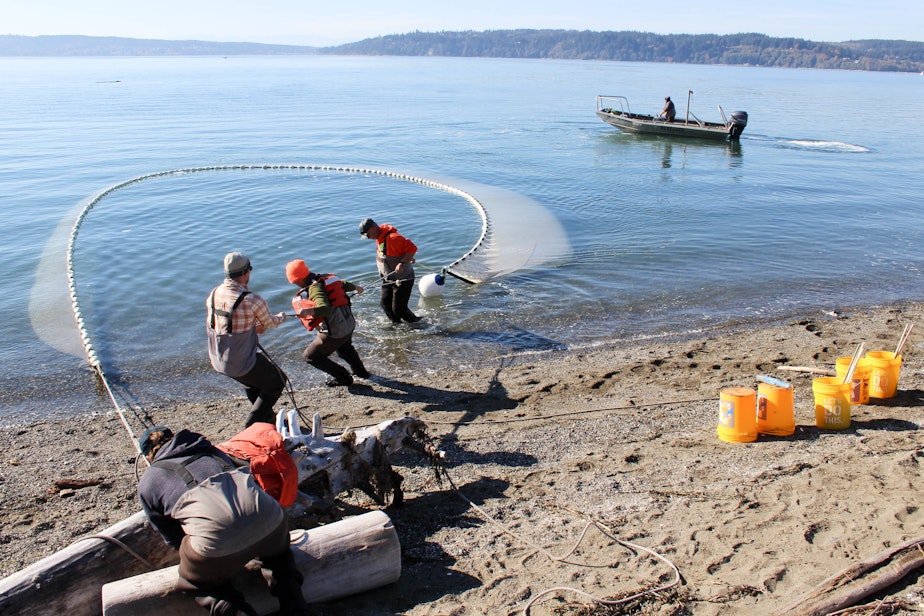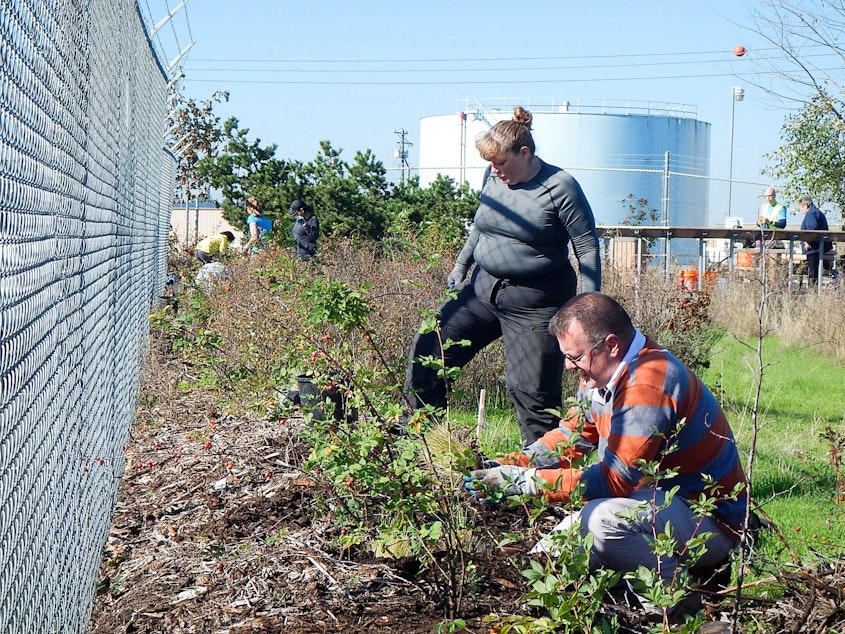Why famished orcas may have to wait 90 years for more salmon

T
housands of foam earplugs.
That’s what environmental activists found as they began to restore the tiny Rhone-Poulenc salt marsh deep in the industrial bowels of Tacoma.
“We were going to make cartoon animals out of them,” said Bradley Thompson, a volunteer. “It was disgusting.”
The unlikely nature reserve, named for a chemical company, sits between an oil refinery and a shipping terminal.
The Port of Tacoma created it 20 years ago, as a sort of atonement for damage it did next door when it built a 2,000-foot-long dock on the heavily industrial Blair Waterway. The goal was to provide “high-quality habitat” for young salmon and seabirds.
“It was developed primarily as salmon habitat but has not been particularly rich in salmon recovery,” said Katie Whittier with the Port of Tacoma.
Sponsored
Activists found the 1.5-acre marsh covered in weeds and garbage and set to work.
Kathi White of Tacoma volunteered after attending a memorial at the marsh for J-50, the starving orca that died in September. “I found out that I could actually volunteer and help the salt marsh,” White said. “We need the salmon to come back to take care of the orcas.”
Chinook salmon are the main prey of southern resident killer whales, which now number only 74 animals, their lowest numbers in decades.
Salt marshes are a critical habitat for young chinook salmon as they head out to sea, which makes the tidal wetlands critical for our region’s endangered orcas as well.
After months of yanking industrial trash and weeds, volunteers are now putting in native grasses, shrubs and flowers around the marsh’s edge.
Sponsored
“You're surrounded by this industrial, noisy space and then the more you kind of get your hands dirty and get moving, you kind of forget about that noise,” said volunteer Alison Solomon of Tacoma. “You're just in this whole other space, and it's beautiful, and there's hummingbirds and all kinds of things just growing. So it's such a cool spot.”
The marsh and city park are named for the French company that used to manufacture fertilizer and potash on this spot: Rhone-Poulenc Basic Chemicals.
The volunteers are with Earthcorps and with 350 Tacoma, a climate-action group that has promised the city to care for the Rhone-Poulenc marsh for the next five years. Thompson said the group is working with the Puyallup Tribe to bestow a less-toxic name to the site: qʷiqʷəlut, Lushootseed for “little marsh.”
Sponsored
Like any marsh, this one filters sediment and pollution before it can enter open water. But it’s too small to do much for salmon, especially sitting as it does midway up the Blair Waterway, a 2-mile-long, pencil-straight shipping channel dredged out of the Tacoma tideflats during World War II.
Since the 1990s, governments have moved away from restoring isolated little wetlands like this one in favor of much bigger projects in places where they can do the most good.
Large-scale marsh restoration has been under way at the mouth of the Skagit River, an hour north of Seattle, for some 15 years. Hundreds of acres of salt marsh that didn’t exist a decade ago now harbor young salmon and other fishes.
Eric Beamer, a biologist for the Swinomish and Sauk-Suiattle tribes nearby, looked out over one of the delta’s newest marshes on Fir Island, as snow geese circled overhead.
“There were a few hundred fish living here before restoration,” Beamer said. “After restoration, in 2017, we saw about 50,000 fish, juvenile chinook, living here.”
Sponsored
The Skagit River produces most of the chinook in Puget Sound. Recovery of Puget Sound depends on recovery of the Skagit, Beamer said.
Most salt marshes along the Skagit River were converted to farmland long ago, leaving the river mouth a largely unfriendly habitat for young salmon. The push to get chinook off the endangered species list has centered on giving these little smolts marshes to swim in and hide before they head out to sea. The long-term goal: bring back one-tenth of the Skagit’s vanished marshes.
For the past 20 years, scientists have headed out in boats around Skagit Bay to see if marsh restoration is making a difference for the fish.
The years of fieldwork show that chinook thrive in the new marshes. But it’s slow going.
“At the pace we’re recovering estuaries, it will take 90 years to achieve the goals of the recovery plan,” Beamer said.
Sponsored

The 2005 federal recovery plan for chinook salmon had more ambitious timelines: 25 years in the Skagit, 50 years in the rest of Puget Sound.
Either pace might be far too slow for the region’s remaining 74 southern resident killer whales, starving for salmon today.
“I won't get to see it,” Beamer said. “My kids won't get to see it. Maybe my grandkids might see it. I have five grandkids. I would think we could do better than that.”
Puget Sound chinook were listed as “threatened” under the Endangered Species Act in 1999. The act requires the government to work to rebuild the species’ population, but it doesn’t say how fast that needs to happen.
“There isn't a hard and fast deadline,” said Elizabeth Babcock, who oversees chinook salmon recovery in North Puget Sound for the National Oceanic and Atmospheric Administration. “Reversing the long-term habitat losses that we've seen will take a long time.”
She called Beamer’s findings “a kick in the pants.”
“We know what needs to be done,” Babcock said. “The challenge will be getting the political will, support and funding to actually go out and execute it.”
While orca and salmon advocates want marsh restoration to accelerate, it could easily slow down. Most of the publicly owned land that could become salt marsh has already been converted. Future restoration would require finding farmers or other landowners willing to sell their low-lying land and let it be flooded with saltwater.
“It becomes unusable as agricultural land,” Richard Brocksmith of the nonprofit Skagit Watershed Council in Mount Vernon said.
“We know how to increase chinook salmon and orca abundance, but unfortunately, there aren't any painless options in front of us,” Brocksmith said. “That's why we really have to work together to understand the implications and find out what we can do together.”
The first recommendation of Gov. Inslee’s orca task force is to put more money into habitat for chinook salmon in places like the Skagit, where it should help orcas the most.
This week, a task force is set to advise the governor how to help the orcas of Puget Sound. This story is part of KUOW's Orca Emergency series, which explores some of the most difficult problems to solve.




